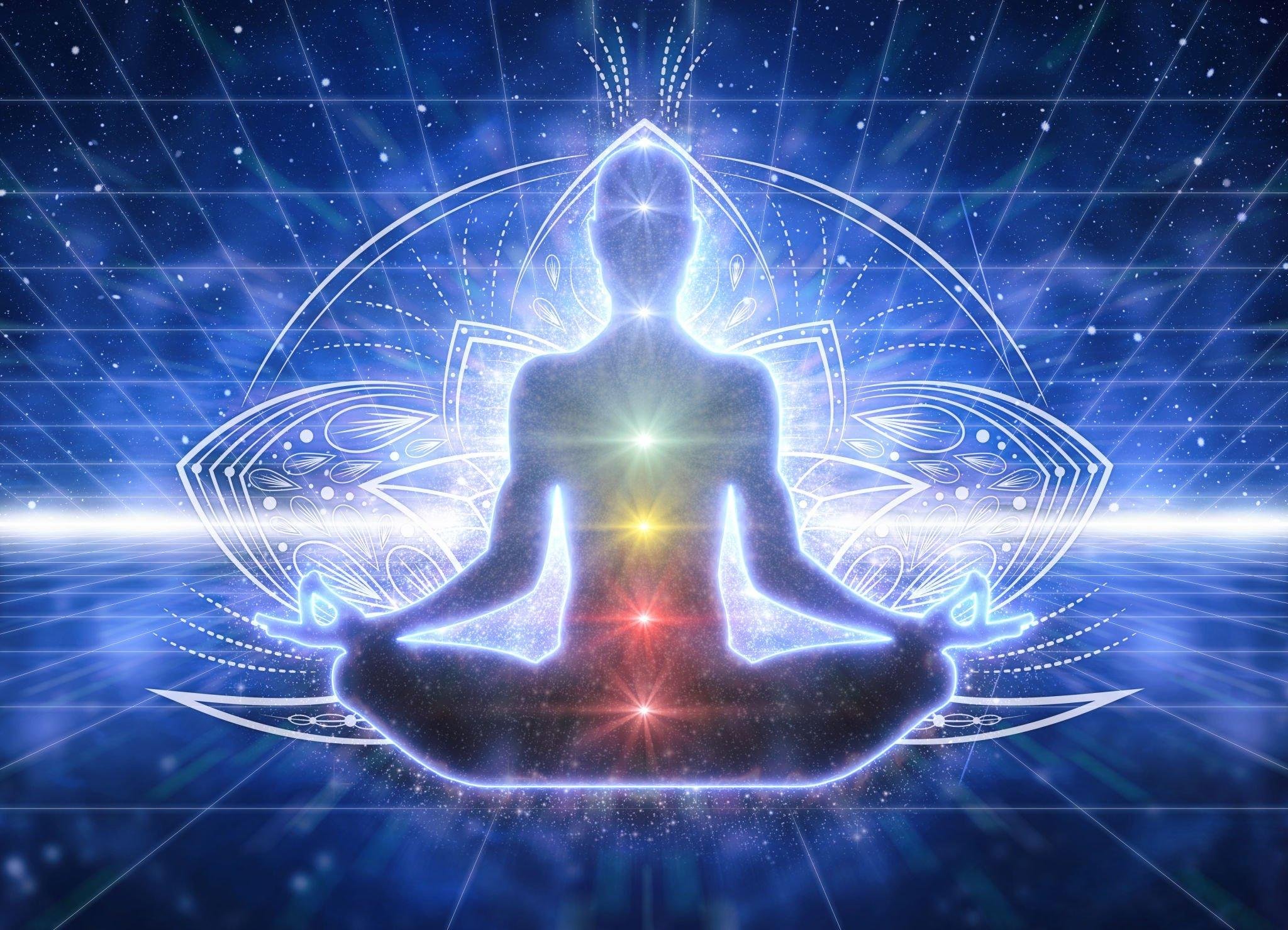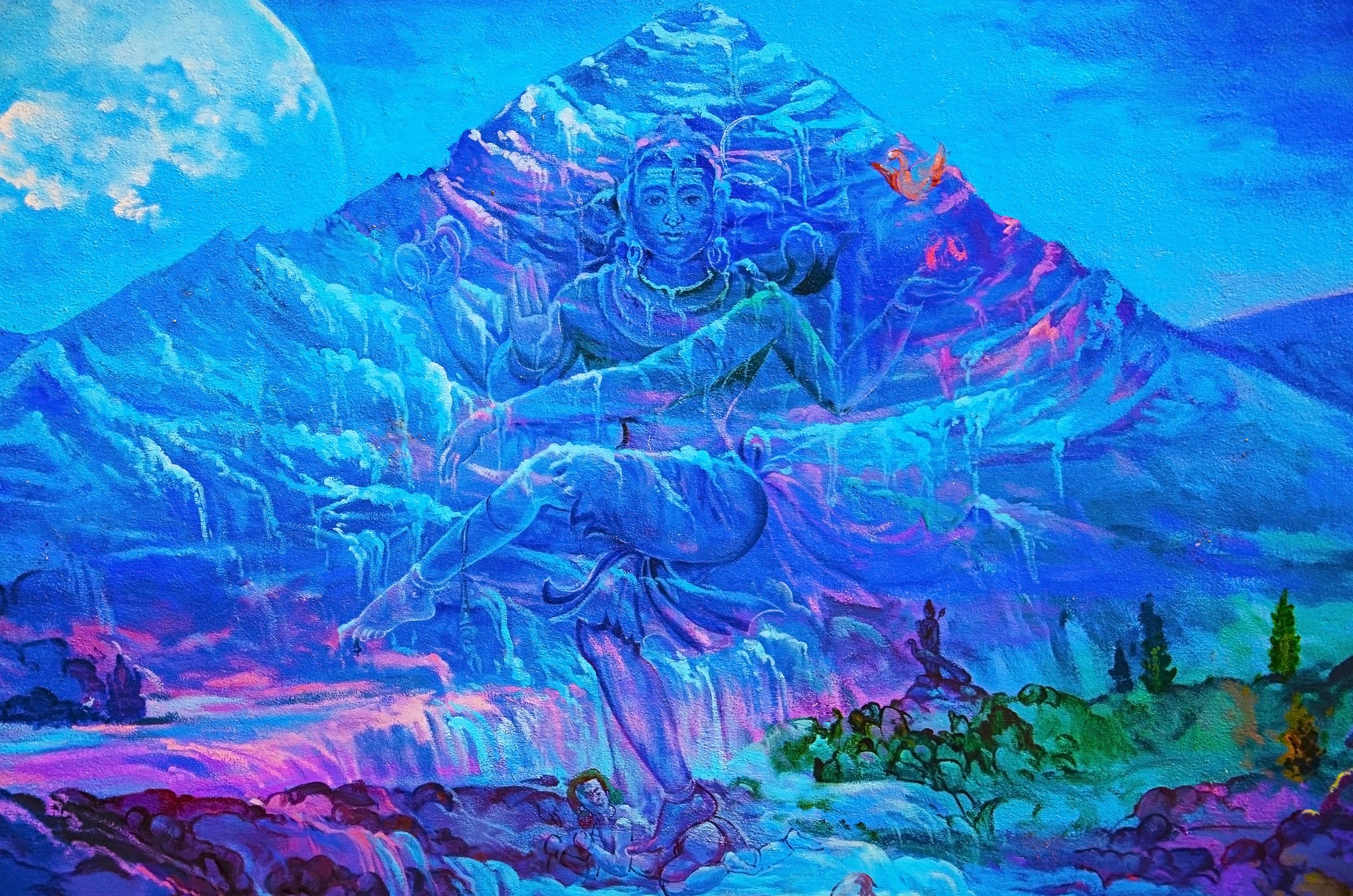Hinduism - Sanatan Dharma
Hinduism is one of the world's oldest religions, originating in the Indian subcontinent. It is a complex and diverse religious tradition with no single founder or central authority. Instead, it encompasses a wide range of beliefs, practices, and rituals that have evolved over thousands of years.
Key Beliefs:
Dharma: Dharma refers to the moral and ethical duties and responsibilities that individuals have in Hindu society. It varies according to one's age, caste, occupation, and gender.
Karma: Karma is the law of cause and effect, which states that every action has consequences. Good actions lead to positive outcomes, while negative actions result in suffering.
Samsara: Samsara is the cycle of birth, death, and rebirth. Hindus believe in the concept of reincarnation, where the soul (Atman) is reborn in a new body after death.
Moksha: Moksha is the ultimate goal of Hinduism, representing liberation from the cycle of Samsara. It is achieved through self-realization, spiritual knowledge, and union with the divine.
Image Credit @grakozy (Greg Rakozy)

Brahm - The Supreme Self
Brahm, often referred to as the Supreme Self or Ultimate Truth in Hinduism, represents the highest and all-encompassing cosmic principle. It is an abstract concept that transcends human comprehension and is believed to be the underlying essence of the universe. Brahma, on the other hand, is a deity associated with the act of creation in Hindu mythology. Brahm is often described as formless, infinite, eternal, and beyond attributes. It is considered the source and sustainer of all existence, encompassing everything in the cosmos, including matter, energy, consciousness, and beyond. Hindu scriptures describe Brahm as the fundamental reality underlying all beings and phenomena. Conceptually, understanding Brahm requires transcending the limitations of the material world and entering a realm of pure consciousness and awareness. It is believed that by realizing the true nature of Brahm, one can attain liberation (moksha) from the cycle of birth and death.
In Hindu philosophy, various schools of thought provide insights into the nature of Brahm. Advaita Vedanta, for example, emphasizes the non-dual nature of Brahm, stating that the individual self (Atman) and the Supreme Self (Brahm) are essentially the same. According to this perspective, the perceived duality of the world is an illusion, and true realization comes from recognizing the oneness of all existence. Brahm is also closely associated with the Hindu trinity of deities. Brahma, Vishnu, and Shiva represent the three aspects of the divine—creation, preservation, and destruction, respectively. Brahma is often depicted with four faces, symbolizing his role as the creator of the four Vedas, the ancient scriptures of Hinduism.
While Brahma is recognized as a deity in Hindu mythology, he is not widely worshiped in contemporary Hinduism. Temples dedicated solely to Brahma are rare, and his prominence in rituals and festivals is relatively limited. This is primarily due to the belief that Brahma's role in creation is fulfilled, and the focus of devotion and worship is often placed on deities such as Vishnu, Shiva, and various forms of the goddess Devi. In summary, Brahm represents the concept of the Supreme Self or Ultimate Truth (Brahm) in Hinduism. While Brahma is a deity associated with creation in Hindu mythology, the broader understanding of Brahm goes beyond the anthropomorphic form and encompasses the ineffable essence that underlies all existence. Understanding Brahm requires transcending the limitations of the material world and realizing the non-dual nature of reality.
Hindu Sacred Texts
Hinduism is a religion deeply rooted in the wisdom and teachings found within its sacred texts. These texts serve as guiding principles for millions of followers, providing insights into the nature of reality, ethical living, spiritual practices, and the ultimate truth. Among the vast collection of Hindu scriptures, several texts hold particular significance and are revered as the bedrock of religious and philosophical knowledge.
The Vedas, composed between 1500 to 500 BCE, stand as the oldest and most authoritative scriptures in Hinduism. They are considered revelations from the cosmic realm, revealed to ancient sages during intense periods of meditation. The word "Veda" itself means knowledge or wisdom. These ancient texts comprise four main divisions: the Rigveda, the Yajurveda, the Samaveda, and the Atharvaveda.
The Rigveda is the oldest and most prominent of the four Vedas. It contains a collection of hymns, praises, and prayers dedicated to various deities. These hymns not only express devotion and gratitude but also serve as a source of inspiration for rituals and ceremonies. The Yajurveda focuses on the rituals and procedures for performing sacrificial ceremonies, while the Samaveda emphasizes the melodies and chants to be used during religious rituals. The Atharvaveda contains hymns and rituals related to healing, magic, and daily life.
The Upanishads, a philosophical and mystical extension of the Vedas, are considered the essence and culmination of Vedic thought. They explore profound metaphysical and spiritual concepts, delving into the nature of reality, the self, and the ultimate truth. The Upanishads are dialogues between teachers (gurus) and their disciples, revealing insights into the nature of existence and the path to self-realization. These texts advocate the realization of the non-dual nature of Brahman, the supreme reality, and the identification of the individual self (Atman) with the universal Self.
One of the most revered texts in Hinduism is the Bhagavad Gita, a section of the epic Mahabharata. Presented as a conversation between Prince Arjuna and Lord Krishna, the Bhagavad Gita addresses the profound philosophical and ethical dilemmas faced by Arjuna on the battlefield of Kurukshetra. It delves into themes of duty, righteousness, devotion, and the nature of God. The Gita offers practical guidance on how to lead a virtuous life, fulfill one's obligations, and attain spiritual enlightenment amidst the challenges and complexities of the world.
Beyond these primary texts, Hinduism encompasses a vast array of scriptures, including the Puranas, Ramayana, and Mahabharata, which hold profound religious, historical, and mythological significance. The Puranas are a collection of texts that contain narratives of creation, genealogy of deities, legends, and moral teachings. The Ramayana, attributed to the sage Valmiki, narrates the epic tale of Lord Rama, embodying ideals of righteousness, devotion, and dharma. The Mahabharata, besides containing the Bhagavad Gita, chronicles the epic struggle between two factions of a royal family and imparts moral, ethical, and philosophical lessons.
The study and contemplation of these sacred texts play a vital role in the lives of Hindu adherents. They provide a comprehensive framework for understanding the universe, human existence, and the path to spiritual enlightenment. Through the Vedas, Upanishads, Bhagavad Gita, and other revered scriptures, Hindus find solace, guidance, and inspiration to navigate the complexities of life while seeking a deeper connection with the divine. These texts continue to shape and preserve the rich tapestry of Hindu traditions, philosophy, and spirituality, offering a profound understanding of the human experience and the eternal quest for truth.
Image Credit - Unsplash, Sonika Agarwal
Creation and the Five Elements: Unveiling the Cosmic Manifestation
According to Hindu cosmology, the process of creation unfolds as the transformation of the formless and infinite Brahm into the tangible universe we perceive. At the heart of this creation lies the concept of the five elements—Earth, Water, Fire, Air, and Space—which play a vital role in shaping and sustaining the world as we know it.
The Primordial Nothingness:
In Hinduism, creation emerges from the primordial nothingness, referred to as the state of cosmic dissolution or Pralaya. This is a phase where the entire universe, including the elements, temporarily merges back into Brahm, awaiting the next cycle of creation.
The Spark of Creation:
From the state of Pralaya, creation begins with the emergence of a divine impulse within Brahm. This divine desire leads to the transformation of the formless Brahm into the manifest universe, setting the stage for the five elements to come into existence.
The Five Elements:
The five elements, also known as Pancha Mahabhutas, are the fundamental building blocks of the physical world. They represent the subtle energies and qualities that give rise to all material existence. Each element possesses distinct characteristics and influences different aspects of creation:
a. Earth (Prithvi): Symbolizing stability and solidity, Earth represents the physical matter and substance that form the foundation of existence. It is associated with the sense of smell and provides a platform for life to flourish.
b. Water (Apas): Water embodies the fluidity and adaptability necessary for life. It is associated with the sense of taste and represents the vital element in sustaining various life forms.
c. Fire (Agni): Fire symbolizes transformation, energy, and illumination. It is associated with the sense of sight and represents the force that enables change and sustains life's processes.
d. Air (Vayu): Air represents movement, motion, and breath. It is associated with the sense of touch and plays a crucial role in the circulation of vital energy and the exchange of gases essential for life.
e. Space (Akasha): Space is the subtlest and most expansive element, providing the canvas for all other elements to exist. It represents openness, boundlessness, and potentiality. Space is associated with the sense of hearing and accommodates all forms of existence within its embrace.
Creation Unfolding:
As creation progresses, the interplay of these five elements becomes apparent. The elements combine and interact to give rise to the diversity and complexity of the manifested world. They form the basis of physical objects, life forms, and the intricate ecosystems that sustain life.
Creation and Brahm:
While the five elements are essential components of creation, Hinduism emphasizes that they are not separate from Brahm. Instead, they are expressions and manifestations of the divine. Brahm, as the underlying reality, permeates and sustains all elements, representing the unity and interconnectedness of creation.
Symbolism and Spiritual Significance:
Beyond their physical manifestations, the five elements also hold symbolic and spiritual significance. They reflect profound philosophical concepts and serve as metaphors for spiritual growth and self-realization. Exploring the qualities and dynamics of the elements can offer insights into the nature of existence and the human journey towards realizing the divine within.
Image Credit Unsplash @JBcreate_
Philosophical Darshanas of Sanatan Dharma
The six philosophical darshanas of India, also known as the six classical schools of Indian philosophy, are as follows:
Nyaya Darshana: Nyaya is a school of logic and epistemology. It focuses on the nature of knowledge (pramana), valid means of knowledge, and logical reasoning. Nyaya analyzes concepts such as perception, inference, comparison, testimony, and negation to establish valid reasoning and gain accurate knowledge.
Vaisheshika Darshana: Vaisheshika is a school of metaphysics and materialism. It examines the nature of reality, the composition of matter, atoms, and the principles of causality. Vaisheshika categorizes objects into various substances and investigates their qualities, modes of existence, and ultimate principles.
Sankhya Darshana: Sankhya is a school of dualistic philosophy. It delves into the nature of reality and the self. Sankhya explores the distinction between matter (Prakriti) and consciousness (Purusha). It analyzes the components of existence, the gunas (qualities) that govern creation, and the path to liberation through self-realization and detachment from the material world.
Yoga Darshana: Yoga is a practical and experiential school of philosophy. It encompasses physical, mental, and spiritual practices to achieve unity with the universal consciousness. Yoga involves techniques such as physical postures (Asanas), breath control (Pranayama), meditation (Dhyana), and ethical principles to attain self-realization and spiritual growth.
Mimamsa Darshana: Mimamsa is a school of philosophy that focuses on the interpretation of sacred texts, particularly the Vedas. It explores the principles of ritualistic practices, sacrificial ceremonies, and the nature of dharma (duty/righteousness). Mimamsa aims to understand the proper interpretation and application of Vedic rituals to ensure the fulfillment of individual and societal responsibilities.
Vedanta Darshana: Vedanta is a comprehensive school of philosophy that examines the teachings of the Upanishads, the culmination of Vedic wisdom. It explores the nature of reality (Brahman), the individual self (Atman), and their ultimate unity. Vedanta encompasses different sub-schools, including Advaita (non-dualism), Vishishtadvaita (qualified non-dualism), and Dvaita (dualism), each offering distinct perspectives on the nature of existence and the path to self-realization.
These six classical schools of philosophy offer diverse perspectives on various aspects of reality, consciousness, and the self. They form the foundation of Indian philosophical thought and have significantly influenced the intellectual and spiritual traditions of the Indian subcontinent.
Image Credit Unsplash @
Divine Trinity of Creation, Sustenance, and Destruction.
In Sanatana Dharma (Hinduism), Brahma, Vishnu, and Shiva are revered as the three primary aspects of the Supreme Being, representing the functions of creation, sustenance, and destruction in the universe.
Brahma - The Creator: Brahma is the first member of the Hindu Trinity, and he symbolizes the creative aspect of the Supreme Being. He is often depicted with four heads, each facing a different direction, representing his all-encompassing knowledge. Brahma is usually shown sitting on a lotus, which symbolizes the process of creation emerging from the cosmic waters.
It is believed that Brahma is responsible for creating the universe and all living beings within it. He is associated with the power of creation (Srishti) and is considered the source of all knowledge and wisdom. However, while Brahma is the creator, he is not as actively worshiped as Vishnu and Shiva in modern Hindu practices.
Vishnu - The Sustainer: Vishnu is the second member of the Hindu Trinity and embodies the aspect of preservation and sustenance. He is depicted as a blue-skinned deity, often shown with four arms, holding various divine attributes. Vishnu is typically depicted resting on the cosmic serpent, Shesha, in the ocean of existence.
According to Hindu belief, Vishnu incarnates on Earth in various forms (avatars) to maintain cosmic order and protect dharma (righteousness). His avatars, such as Lord Rama and Lord Krishna, descend to guide humanity, restore balance, and protect the universe from evil forces. Vishnu represents the force that maintains harmony and balance in the cosmos.
Rudra - The Destroyer: Rudra is the third member of the Hindu Trinity and embodies the aspect of destruction and transformation. He is often depicted with a third eye, symbolizing his intuitive knowledge, and a crescent moon on his head. Rudra is usually shown with matted hair and a snake coiled around his neck.
Rudra's role as the destroyer is not one of annihilation but rather that of transformation and regeneration. Destruction, in this context, paves the way for new creation and renewal. Rudra's dance, known as the Tandava, represents the eternal rhythm of creation, preservation, and dissolution.
Together, Brahma, Vishnu, and Rudra form the Trimurti, the trinity that represents the cosmic processes of creation, sustenance, and destruction in the eternal cycle of existence. Their interplay ensures the cyclical nature of the universe and reflects the cosmic principles at the heart of Sanatana Dharma.
Image Credit Unsplash @
Divine Trinity Yogic Interpretation
Brahma, Shiva, and Vishnu hold profound symbolism in Hinduism, each representing different aspects of the cosmic order and the divine. Let's explore their symbolism in more detail:
Brahma:
Four Heads: Brahma is often depicted with four heads, each facing a cardinal direction. These four heads symbolize the four aspects of the mind, known as Manas (mind), Buddhi (intellect), Chitta (memory), and Ahamkara (ego). It represents the all-encompassing nature of Brahma's consciousness, which comprehends all directions of creation.
Lotus and Creation: Brahma is associated with the lotus flower, which emerges from the navel of Vishnu. The lotus symbolizes purity, spiritual unfolding, and the process of creation. It represents the emergence of life from the cosmic waters of creation.
Shiva:
Third Eye: Shiva is often depicted with a third eye on his forehead, known as the "inner eye" or the "eye of wisdom." This third eye represents intuitive knowledge and spiritual insight. When Shiva opens his third eye, it unleashes a powerful force that can bring about destruction or transformation of the ignorance we have about the fear of death.
Crescent Moon: Shiva is often depicted with a crescent moon on his head. The moon symbolizes the passing of time and the cyclical nature of creation. It also represents the mind and emotions, highlighting Shiva's transcendence beyond the limitations of the mind.
Nataraja: Shiva's cosmic dance, known as the Nataraja, symbolizes the rhythmic cycles of creation, preservation, and dissolution. The dance occurs within a circle of flames, representing the eternal cycle of birth, death, and rebirth.
Vishnu:
Ananta and Cosmic Sleep: Vishnu is often depicted resting on the serpent Ananta (also called Shesa- remainder), which symbolizes the timeless and infinite nature of the universe. In his cosmic slumber, Vishnu sustains the universe, ensuring its continuity and balance.
Conch and Discus: Vishnu is shown holding a conch shell (Shankha) and a discus (Chakra). The conch represents the primordial sound from which creation emerged, while the discus represents the cyclical nature of time and the cosmic order.
Ten Avatars: Vishnu is believed to have ten avatars (incarnations) known as the Dashavatara. These avatars descend to Earth in times of crisis to restore balance, protect dharma, and guide humanity towards spiritual evolution. These avatars also represent the manifestation of consciousness in physical existence to a certain degree of perfection. Please read significance of ten avatars of Vishnu below.
Overall, the symbolism of Brahma, Shiva, and Vishnu reflects the deep spiritual and philosophical concepts within Hinduism. Each deity embodies unique qualities and cosmic functions that contribute to the eternal cycle of creation, preservation, and dissolution in the universe.
Image Credit Unsplash @











